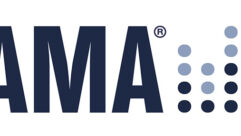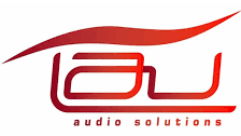
Audio Review: dbx Professional Products DriveRack PX
Nov 1, 2008 12:00 PM,
By John McJunkin
A welcome optimizer for powered loudspeakers.

Using internally bi- and tri-amplified loudspeaker solutions has raised the bar on audio fidelity for contractors, and the simplicity of rolling up on scene with a pair or two of such loudspeakers is vastly preferable to packing loudspeakers, crossovers, and amps separately. But for many (myself notwithstanding), a slightly greater degree of control and quality is desired. In spite of the truly excellent quality of the three-way self-powered loudspeakers I’m known to use quite frequently, I’ve been known to employ supplementary processing to deliver more consistent levels, tune up the system for the room, and to avoid loudspeaker damage. I’ve always thought it would be nice to have a one-box solution to handle room-tuning, dynamics, feedback suppression, and crossover duties for subwoofer applications, rather than lugging a rack full of gear to get the job done. Dbx Professional Products has introduced the DriveRack PX powered loudspeaker optimizer. I was truly excited to hear about this development. Anything that can move the quality of powered loudspeakers toward a professionally tuned multi-amped system is welcome in my book.
The DriveRack PX is a 1RU box, and that small size is part of its raison d’être: to avoid taking up a lot of rack real estate. From left to right across the front panel, you’ll find the XLR input for the unit’s RTA mic. This is followed by an RTA input switch, which engages the RTA mic and launches the unit’s Auto-EQ wizard. Next up is the LCD display, followed by a data-entry wheel. A 3×3 matrix of pushbuttons is up next, granting control of the unit. Among these, you’ll find the obligatory navigation keys as well as comp/limiter and sub-harmonic synthesizer menu-access buttons. There are also three wizard-launcher buttons for setup, EQ, and advanced feedback suppression (AFS). To the right of the control buttons are the unit’s meters: six-segment LED stereo pairs for input, output, and sub outputs. All four output meters have an LED to indicate engagement of limiters.
The rear panel is very straightforward, with balanced XLR I/O across the board. There is a stereo input pair, a stereo output pair, and stereo sub output pair. Literally, the only other feature of the rear panel is the unit’s IEC power input. Like their corresponding meters on the front panel, the principal stereo outputs represent full bandwidth if no subs are employed and the LPF output if subs are employed.
The unit brings together a broad spate of processors that are generally useful in live sound and expressly useful to optimize powered loudspeakers. Specifically, the box provides stereo feedback elimination with 12 feedback notch filters, a stereo 28-band graphic EQ, a classic dbx (OverEasy) compressor, and the classic dbx 120A subharmonic synthesizer to fill in the low end. There are also a stereo three-band parametric EQ, stereo limiters, and a pink-noise generator for room tuning — which can be accomplished automatically with the system’s auto EQ that is based on 28-band RTA. A dbx M2 measurement mic is included for this process; it’s a small test mic in the traditional nuclear-missile shape you’d expect. Conversion is an issue because all internal processes are digital, and the resolution is 24-bit/48kHz. Dbx’s Type IV conversion is employed, and it sounds very good.
Twenty-five user programs can be stored in the system, and it ships with 25 factory presets, including nearly every imaginable permutation of JBL’s powered loudspeakers and subwoofers. The unit also provides support for powered loudspeakers from dB Technologies, Mackie, Peavey, QSC Audio Products, RCF, Samson, Yamaha, Yorkville, and HK Audio. The system’s menus are easily navigated with the matrix of buttons and data wheel. One minor exception: You must literally press a button each time you wish to proceed on to the next of the graphic EQ’s 28 bands. This is a bit unwieldy, but navigation is otherwise easy. The wizards are also a nice touch, facilitating simplified and quick setup, which is very useful for portable DJs and contractors alike.
Audio Review: dbx Professional Products DriveRack PX
Nov 1, 2008 12:00 PM,
By John McJunkin
A welcome optimizer for powered loudspeakers.
I test drove the system in a semi-professional environment with drums, bass, electric and acoustic guitars, and four vocalists. The loudspeakers were a pair of Mackie SR1530s (three-way powered loudspeakers with 15in. woofers). No subwoofer was employed. In this application, a digital mixer with limited dynamics processing is normally used, and I disabled the compression on the mixer’s mains in order to hear the dbx compression. After inserting the DriveRack PX between mixer and loudspeakers, I launched the setup wizard from the front panel. After informing the unit that there would be no sub and that I was using a “custom” loudspeaker configuration (rather than a factory preset), the system proceeded to establish proper left-right balance. The system then proceeded on to the Auto-EQ wizard, in which I connected the RTA mic (which was placed in the center of the audience area) and pressed the RTA input button. I was presented with five different curve choices (including a flat one). I chose a subtle “disco smile” curve with slightly pronounced low end and high end. Next up, the pink noise appeared from my loudspeakers, and the system auto-equalized for the room and the curve I chose. After auto-equalization, the AFS wizard came next. In realtime, I gradually raised the master fader on the mixer to the performance level while the filters automatically sought and eliminated feedback.
After running the wizards, I manually inserted the compressor, limiter, and subharmonic synthesizer. I stored the preset and turned the controls over to the front-of-house mixer, who reported that his mix sounded brighter with much more satisfying low end. I moved around the audience area throughout the performance and discovered the overall quality of the sound to be substantially improved. The main reason I chose the bass and treble-enhancing curve in the DriveRack PX is that I have always found those two domains lacking when I have mixed front of house with this system in this venue. The digital version of dbx’s OverEasy compressor was subtle but effective. At no point did the performance ever reach levels above the limiter’s threshold, but my experience with dbx dynamics processing of all kinds has been very good. During spoken-word non-musical segments of the program, an omnidirectional head-worn mic was employed, and the feedback elimination was very effective. The 120A subharmonic synthesizer is another of dbx’s classic processors, and the digital adaptation of it is great. It subtly mixes in a clone of the bass note an octave below the program bass. This sounds substantially better to me than simply pumping up the low-end EQ, and in this particular venue with this particular system, it did just the trick.
It seems to me that contractors will be thrilled to have a simple, easily used solution to enhance the quality of powered loudspeakers. As I said before, anything that moves the fidelity toward that of a tuned, multi-amped component system is very welcome, and the DriveRack PX effectively accomplishes that goal. It’s simple, it’s powerful, and if you wish to vastly improve the results with your powered loudspeakers, you’ll definitely want to check it out.
PRODUCT SUMMARY
- Company: dbx Professional Products www.dbxpro.com
- Product: DriveRack PX
- Pros: Significant improvement of powered loudspeaker fidelity and control.
- Cons: EQ navigation a bit dodgy.
- Applications: Optimization of powered loudspeakers.
- Price: $599.95
SPECIFICATIONS
Analog Inputs
- Impedance: >40kΩ
- Max input line level: +20dBu
- Input CMRR: >45dB
- RTA mic EIN: >-110dBu, 22Hz-22kHz, 150Ω
Analog Outputs
- Impedance: 120Ω
- Max output level: +20dBu
A/D Performance
- Type: dbx Type IV conversion system
- Dynamic range: >110dB A-weighted, 107dB unweighted
- Type IV dynamic range: 123dB (transient) A-weighted, 22kHz BW; 121dB (transient) unweighted, 22kHz BW; 115dB typical with program, A-weighted, 22kHz BW
- Sample rate: 48kHz
D/A Performance
- Dynamic range: 112dB A-weighted, 110dB unweighted
System Performance
- Dynamic range: 110dB A-unweighted >107dB unweighted
- THD+N: 0.002% typical at +4dBu, 1kHz, 0dB input gain
- Frequency response: 20Hz -20kHz, ±0.5dB
- Interchannel crosstalk: <-110dB, 120dB typical
John McJunkin is the principal of Avalon Podcasting in Chandler, Ariz. He has consulted in the development of studios and installations, and he provides high-quality podcast production services.









